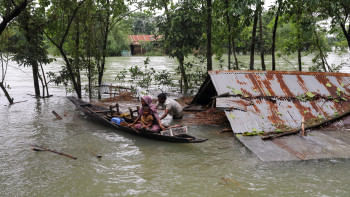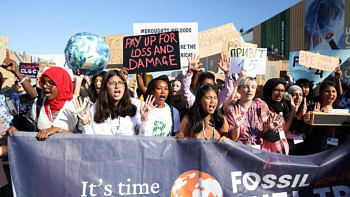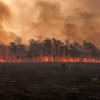What to expect at COP29?

As the impacts of climate change become increasingly evident, discussions on the critical role of climate finance in combating environmental degradation, supporting vulnerable countries, and promoting sustainable economic growth have received increased momentum. In the context of the upcoming 29th meeting of the Conference of Parties (COP29) of the United Nations Framework Convention on Climate Change (UNFCCC) in Baku, Azerbaijan, from November 11 to 22, significant attention has been focused on the issue of climate finance.
At Baku, the new collective quantified goal on climate finance (NCQG) is expected to be launched. According to the United Nations Global Policy Model (GPM), developing countries will need around $1.1 trillion for climate finance from 2025, which will increase to around $1.8 trillion by 2030. The multilateral development banks (MDBs) will be a significant source of the NCQG. This new goal will replace the current climate finance target of $100 billion annually by 2020, set at COP15 in Copenhagen in 2009. During COP21 in Paris in 2015, countries agreed to establish the NCQG by 2025, with a higher level of ambition to address the financing gap needed to manage climate-related shocks.
While the NCQG represents a major step towards fulfilling climate finance needs, several related issues must be addressed to improve the effectiveness of this new funding goal. The $100 billion annual target for climate finance was achieved in 2022—two years after the target year 2020. The seventh assessment report of the Organisation of Economic Cooperation and Development (OECD), published in May 2024, reveals that in 2022, developed countries provided and mobilised $115.9 billion in climate finance for developing countries. This was the first time the annual target of $100 billion in climate finance was exceeded.
Besides the delay, various concerns have been raised about the quality and effectiveness of climate finance, with particular focus on the overall impact. Key areas for improvement within the NCQG include a clear definition of climate finance, criteria for fund distribution, eligibility requirements for recipients, and distinctions between grants, concessional loans, and non-concessional loans.
Another important point is that the landscape of climate finance has changed over time. MDBs have now become the main source of climate finance, surpassing the bilateral climate finance and multilateral funds. The MDBs are allocating more funds for climate change as their overall financial capacity has increased. Global leaders encouraged MDBs to further enhance their financial capacity through the "Independent Review of MDBs' Capital Adequacy Frameworks" launched by G20 leaders in 2022. The OECD report indicates that climate finance from MDBs increased more than threefold between 2013 and 2022. Since 2013, MDBs have accounted for nearly half of the increase in climate funding raised by developed countries. A key focus at COP29 will be on how MDBs can scale up their commitments, leverage private finance, and enhance support for climate resilience and adaptation projects in the most affected regions.
It is expected that the NCQG will establish a comprehensive definition of climate finance, promoting consistency and transparency in climate finance reporting. The quality of the $100 billion in climate finance has often been questioned, as funds for climate initiatives were sometimes redirected from other development areas. Additionally, funds have been labelled as climate finance without clear justification. And in many cases, the amount of funding has been insufficient to make a significant impact.
Therefore, some critical issues will need to be negotiated during discussions on the NCQG during COP29.
First, transparency and accountability are essential to ensure that climate finance is used effectively and reaches the communities most in need. Establishing robust mechanisms for tracking funds, reporting expenditures, and assessing investment impact should be prioritised. Transparent climate finance flows are crucial for building trust between developed and developing countries. Persistent concerns over "double counting" and ambiguous reporting standards have plagued climate finance reporting. At COP29, there should be a strong push for improved tracking, monitoring, and reporting mechanisms to ensure funds reach their intended targets and are used effectively.
Second, access to finance should be simplified and sufficient. There is often a significant gap between available climate finance and the actual needs of developing countries, especially least-developed countries (LDCs) and small island developing states (SIDS), which face unique vulnerabilities. Leaders at COP29 must address the barriers poor countries face in accessing funding, including complex application processes and strict eligibility criteria.
Third, a balance between funding for climate adaptation and mitigation must be ensured. Historically, most climate finance has been directed toward mitigation, while adaptation has received less support. For many developing countries, however, adaptation is a more immediate priority, as they face challenges such as rising sea levels, extreme weather events, and other climate impacts. Although funding for adaptation is growing, it remains lower than funding for mitigation. Developed countries provided $32.4 billion in adaptation finance to developing countries in 2022, compared to $10.1 billion in 2016 (OECD, 2024). However, 60 percent of total climate finance was still allocated to mitigation in 2022.
Fourth, equity and fairness must be at the centre of discussion—climate finance distribution should be equitable, ensuring that vulnerable populations and countries most affected by climate change receive the support they need without excessive bureaucratic hurdles. And COP29 will need to address ways to make it more equitable, including acknowledging historical injustices related to emissions and resource exploitation.
Fifth, leaders must demonstrate strong political will to reach a consensus on a robust climate finance mechanism through the NCQG. The success of climate finance initiatives depends on political commitment from both donor and recipient countries.
Sixth, ensuring the sustainability of funding is essential so that climate finance is not only adequate but also resilient over the long term. Discussions at COP29 should focus on creating funding mechanisms that can withstand economic shocks and political changes.
Seventh, capacity building should be an integral part of climate finance because developing countries often require support not just in terms of finance but also in building the necessary institutional capacity to implement climate projects effectively. Capacity building through knowledge sharing and technical assistance should feature prominently in climate finance discussions.
As the world grapples with the realities of climate change, the NCQG to be launched at COP29 will play a pivotal role in shaping a sustainable future. The success of this initiative will depend on the willingness of developed countries to meet their financial commitments, the establishment of fair and transparent systems, and a collective resolve to ensure that climate finance reaches the most vulnerable population.
Dr Fahmida Khatun is executive director at the Centre for Policy Dialogue (CPD) and non-resident senior fellow of the Atlantic Council.
Views expressed in this article are the author's own.
Follow The Daily Star Opinion on Facebook for the latest opinions, commentaries and analyses by experts and professionals. To contribute your article or letter to The Daily Star Opinion, see our guidelines for submission.

 For all latest news, follow The Daily Star's Google News channel.
For all latest news, follow The Daily Star's Google News channel. 










Comments